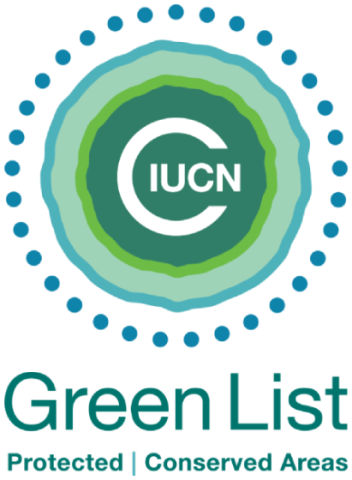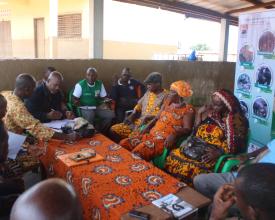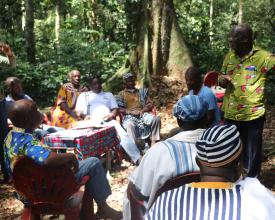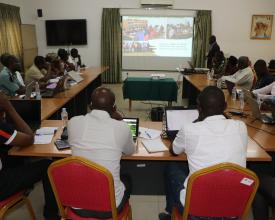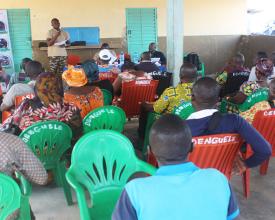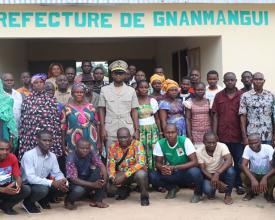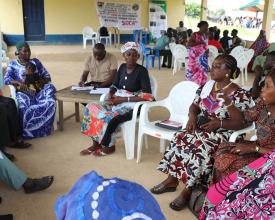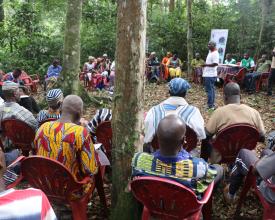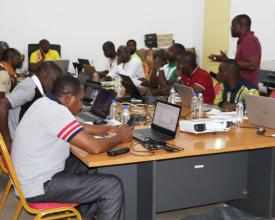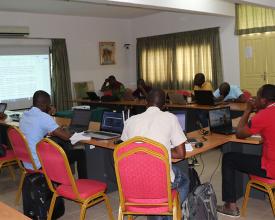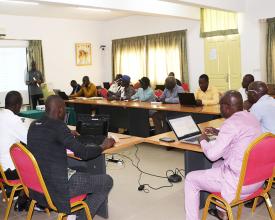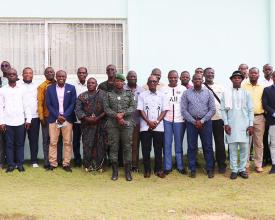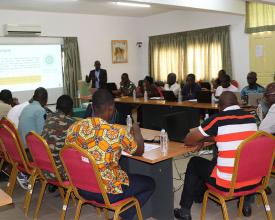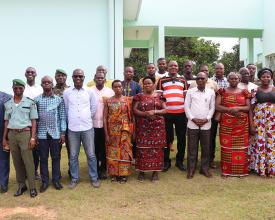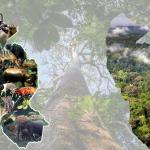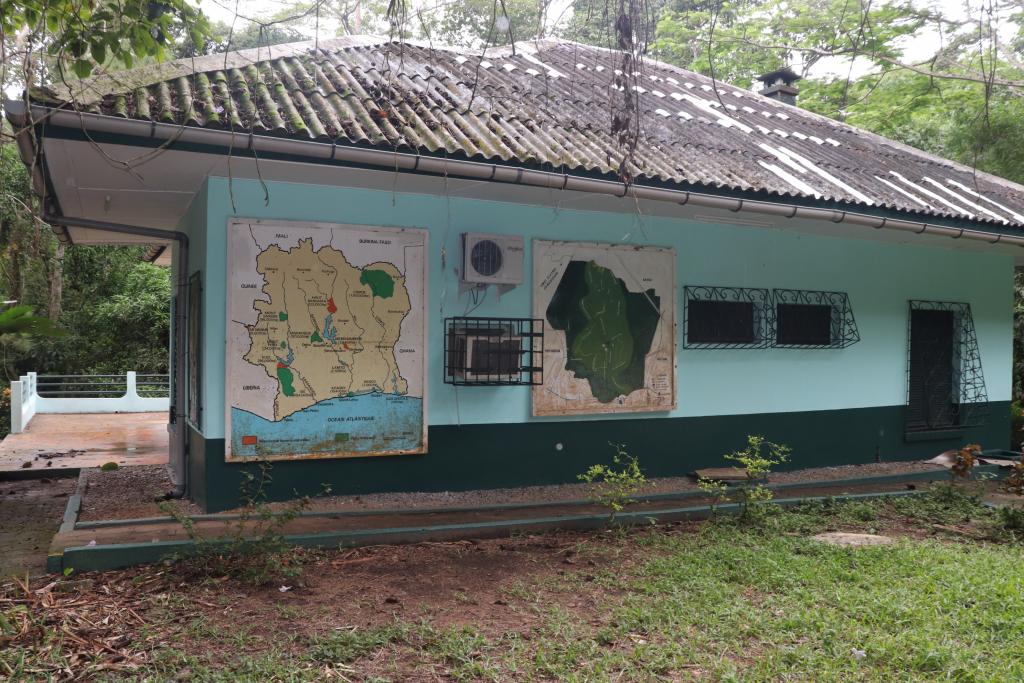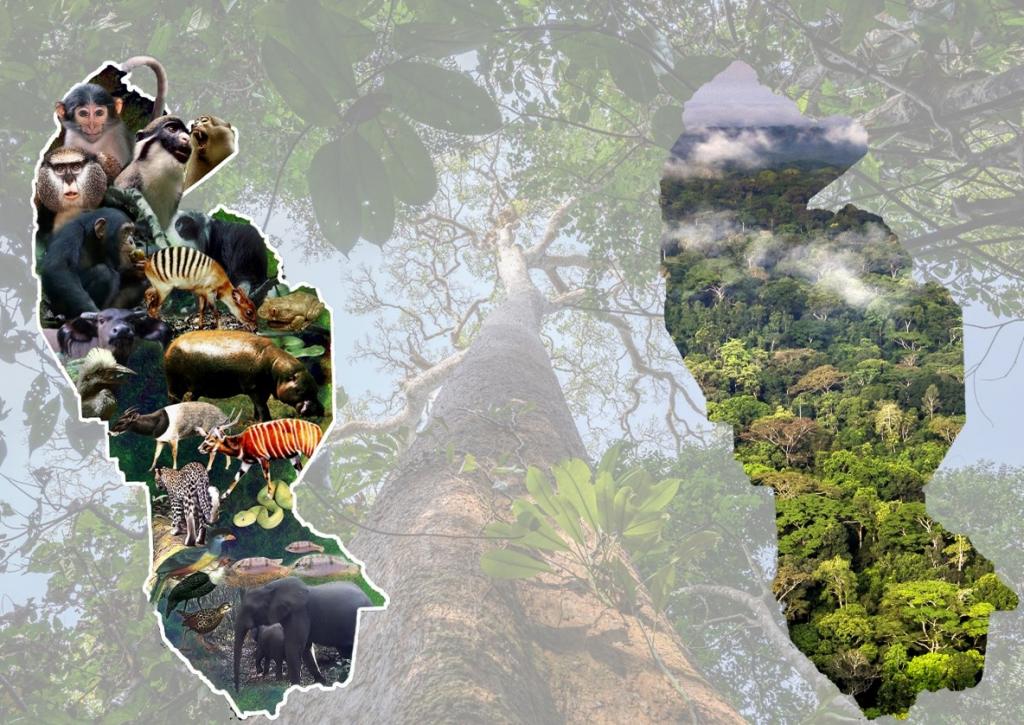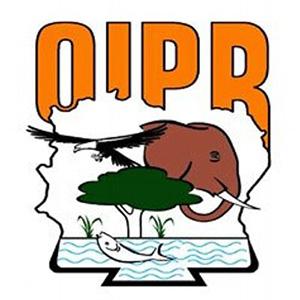
Participatory information mobilization in the process of nominating Taï National Park to the IUCN Green List
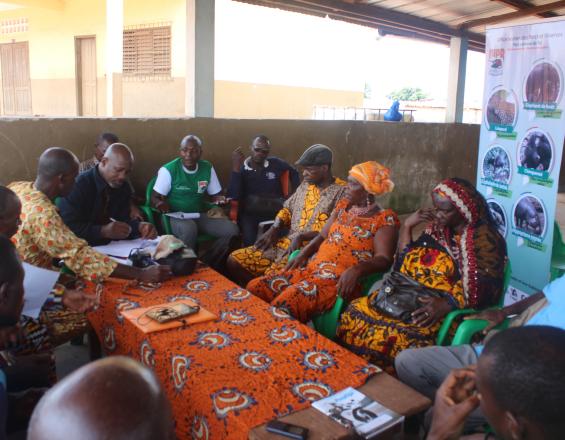
In the process of nominating Taï National Park (TNP - WDPA ID: 721) for the IUCN Green List, information gaps were identified, particularly in relation to criteria 2.1 " Identify and understand the site's key values, including ecosystem services and cultural values " and 3.7 " Measure conservation success through a monitoring system with performance threshold values ". To mobilize this information, OIPR benefited from the Small Technical Grant for Evaluations (PSTE) from the BIOPAMA Action Fund. The activities undertaken under this grant led to the identification of the site's major values not yet monitored, and the implementation of a monitoring system inspired by the TNP's ecological monitoring strategy for the conservation of these values.
Context
Challenges addressed
One of the main challenges is to mobilize stakeholders, especially local communities, to take ownership of the protected area's conservation issues. The consultation approach deployed throughout the implementation process has enabled communities to express themselves freely, identifying the values of the site that they consider important to conserve. However, some of these values remain poorly understood, and require more active involvement from the scientific community through the conduct of studies to better address the threats they face.
Location
Process
Summary of the process
The commitment of local communities formed the basis of our intervention. Participatory identification of the major values of the TNP following consultation meetings with the local communities bordering the park enabled us to identify the major values of the TNP not yet monitored. The involvement of the scientific community, in support of the TNP managers, then made it possible to consolidate the information gathered from local communities on the park's major values, and to propose a monitoring system for the major values not yet monitored. The process, which was intended to be participatory from start to finish, ended with the validation of the two documents drawn up with the scientific community's resource persons by all the stakeholders.
Building Blocks
Involvement of local communities
The first stage focused on mobilizing local communities for the participatory identification of the major values of the TNP on the one hand, and the associated pressures/threats on the other. The mobilization of this stakeholder group was also crucial to the participatory formulation of solutions. Our approach consisted in identifying the resource persons to be involved in gathering information on the values of the protected area, focusing on their perfect knowledge of local culture and customs. These are mainly customary authorities, notably canton chiefs, land chiefs and village chiefs, on the one hand, and opinion leaders and heads of women's and youth associations, on the other.
Local communities are the stakeholders most involved in implementing the solution. Indeed, 232 local residents from the 5 management sectors, including 67 women, took part in the community workshops. In addition, 10 representatives (2 per management sector) of these communities, including 4 women, were mobilized for the technical document validation workshops.
Enabling factors
One of the success factors was the involvement of traditional chiefs and opinion leaders in the planning of community meetings to identify the major values of the protected area. Secondly, the involvement of all sections of the community in the discussions: women, young people and those in the know. Finally, the attachment of communities to the services provided by the TNP.
Lesson learned
Implementation of the grant has shown that local communities remain strongly linked to Taï National Park through their local culture and socio-economic needs.
Involvement of the scientific community
OIPR's partner universities and research centers were involved in the grant implementation process. These include the Université Nangui Abrogoua (UNA) in Abidjan, the Université Jean Lorougnon Guédé (UJLoG) in Daloa, the Université de Man (UMAN), the International Center for Research in Agroforestry (ICRAF) and the Centre Suisse de Recherches Scientifiques en Côte d'Ivoire (CSRS). The resource persons mobilized from the scientific community are teacher-researchers from various specialties (Botany, Ethnobotany, Plant Ecology, Animal Ecology, Socio-Anthropology, Biodiversity and ecosystem development). They played an active role in the development and validation of technical documents. It should also be noted that all technical sessions were chaired by a teacher-researcher.
Enabling factors
Partnership agreements exist between OIPR and most of the universities and research centers in Côte d'Ivoire working in the field of biodiversity and natural resource management.
Lesson learned
The existence of partnership agreements with universities and research centers has facilitated the mobilization, in a relatively short timeframe, of resource persons from the scientific community, with very few resources at our disposal. We need to pursue the signature of other collaboration agreements that facilitate and contribute significantly to the implementation of management activities.
Validation of technical documents with all stakeholders
Two technical documents were drawn up during the implementation of this grant, whose validation by the stakeholders constituted the final stage of the participatory approach. In fact, the aggregated information on the major values of the TNP, the associated pressures/threats and the solutions envisaged, were consolidated by the DZSO technical team to form a summary document. The drafting of this document also benefited from the support of resource persons from the scientific community mobilized during the synthesis workshop. The same applies to the monitoring system for major NWP values not yet monitored. This technical document validation phase not only enabled us to finalize these documents, but also to seize the opportunity to inform the various stakeholders about the implementation of the BIOPAMA Program grant.
Enabling factors
Availability and representation of different categories of stakeholders in NWP management.
Lesson learned
Stakeholder involvement in the implementation of this grant has enabled managers to fill information gaps in the NWP's IUCN Green List nomination process.
Impacts
Dialogue with stakeholders helped to fill the information gaps identified by criteria 2.1 and 3.7 in the TNP's IUCN Green List nomination process. The various consultations enabled the manager to identify important values of the protected area that were not considered as such within the framework of its management. The exercise also demonstrated the need to involve local communities in identifying the park's major values. The participatory identification of major values thus makes it possible to refocus the management objectives of a PA by taking into account the perception of local communities and their traditional knowledge.
In addition, the main conclusions of the approach highlighted the contribution of local communities in conserving the values of the protected area, based on their considerations of these values, the pressures and threats revealed and the solutions proposed.
In addition, the scientific community involved in the process was able to identify some important lines of research to support management, particularly with regard to the cultural values associated with the site.
All in all, this exercise was a fine example of adaptive management of a protected area. The approach could be extended to other protected areas in the national network.
Beneficiaries
Seven (7) stakeholder groups were involved:
-Protected area manager;
-Local communities;
-Universities and research centers;
-Technical development structures;
-Civil society;
-Private sector;
-Technical and financial partners.
Sustainable Development Goals
Story
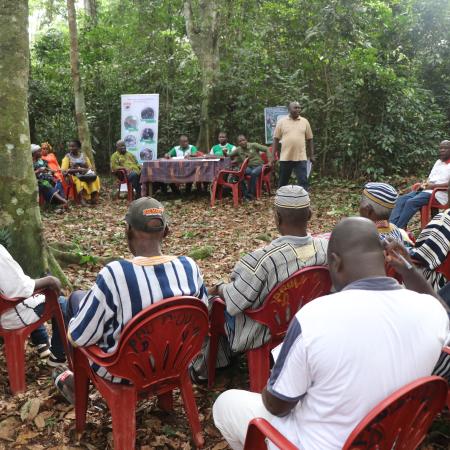
To strengthen the governance and management of the national network of protected areas, OIPR has joined the drive to label certain protected areas, including Taï National Park (PNT), by initiating the process of its inclusion on the IUCN Green List as early as May 2017. Filling in the Green List matrix with the support of IUCN mentors highlighted certain information gaps in evaluation criteria 2.1 and 3.7. To satisfy these criteria, the major values of the TNP were documented in a participatory way, and the system for monitoring the major values of the protected area was updated to include the major values not yet monitored.
The participatory approach implemented with the help of the BIOPAMA Program grant made it possible to fill these gaps. This approach focused on consultations with local communities. These consultations enabled us to benefit from endogenous knowledge.
In addition, the partnership framework between OIPR, universities and research centers facilitated the mobilization of resource persons from the scientific community for the implementation of the grant. The support provided by the scientific community made it possible to draw up a document summarizing the major values of the protected area, as well as the associated ecosystem services and cultural values, identified in a participatory manner with local communities. Finally, this contribution from the scientific community led to the improvement of the protected area's management monitoring system through the implementation of a monitoring system for the major values of the TNP not yet monitored.

